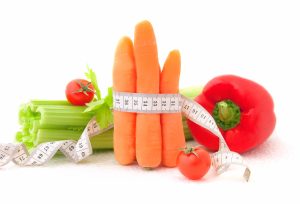Tips for the Maintenance Phase
 The Maintenance Phase for many dieters is very scary. They know precisely what they are allowed to eat during the low-calorie phase, but once they’ve arrived at the Maintenance Phase, they are uncertain. While you can start eating just about anything you want again, you need to be cautious with certain foods, especially those that contain sugars or starches. These tips will help those entering maintenance to be confident and successful while maintaining their weight loss success.
The Maintenance Phase for many dieters is very scary. They know precisely what they are allowed to eat during the low-calorie phase, but once they’ve arrived at the Maintenance Phase, they are uncertain. While you can start eating just about anything you want again, you need to be cautious with certain foods, especially those that contain sugars or starches. These tips will help those entering maintenance to be confident and successful while maintaining their weight loss success.
Most people have a hard time during this phase, usually due to one of three reasons:
Reason Number 1
Not eating enough food, especially protein: Most participants, but not all, can quickly move to 1,500 calories or more. It is not necessary to count calories. If you are a lifetime dieter, you may try to keep eating too little to avoid gaining back the weight you just lost. This is a major, common mistake. In these circumstances, we encourage someone to add up the calories to make sure they are eating enough. According to Dr. Simeons, HCG was releasing 1,500 to 4,000 calories into your system during the 500-calorie diet phase, and you were eating another 500 calories. So, your system has been revved up to handle 2,000 to 4,500 calories PER DAY. If you start cutting back to 800 or 1,200 calories, it will send your body back into the “grab everything and hold onto it” or starvation mode.
Reason Number 2
Eating sugars and starches (intentionally or not): For example, pizza, corn, and potatoes are starches! If you don’t have a strong knowledge of food groups, refer to the Food and Drink Guide section of the HCG Weight Loss Cure Guide. This section lists many foods along with indicators letting you know when foods are allowed during the different phases of the HCG Diet Protocol. Most fruits are permitted, but use caution with both the starchy fruits like bananas and grapes and with the super sweet ones like melons. The same applies to vegetables—most are allowed. The starchy ones like corn, peas, and legumes (black beans, kidney beans, pinto beans, etc.) are not recommended during the first 3 weeks of maintenance. If you do eat them, proceed with caution and make sure to include them in your food journal.
Reason Number 3
Staying on Phase 2 for a little too long: As Dr. Simeons explains, “When abnormal fat is no longer being put into circulation either because it has been consumed or because immunity has set in…, the body starts consuming normal fat, and this is always regained as soon as normal feeding is resumed. The patient then finds that the 2-3 lbs. He has lost during the last days of treatment are immediately regained. A meal is skipped, and maybe a pound is lost. The next day this pound is regained, in spite of a careful watch over the food intake. In a few days, a tearful patient is back in the consulting room, convinced that her case is a failure. All that is happening is that the essential fat lost at the end of treatment, owing to the patient’s reluctance to report a much greater hunger, is being replaced. The weight at which such a patient must stabilize, thus lies 2-3 lbs. Higher than the weight reached at the end of the treatment. Once this higher basic level is established, further difficulties in controlling the weight at the new point of stabilization hardly arise.” So, in this case, add 2 to 3 pounds to your last HCG weight, and follow the standard guidelines for maintenance.


